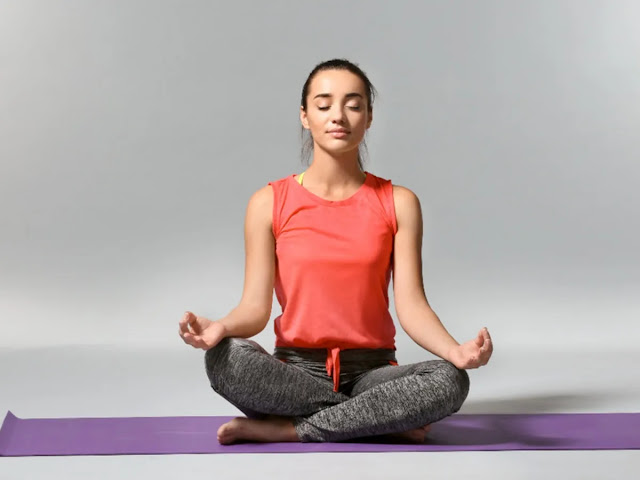Introduction
Easy Pose, known as Sukhasana in Sanskrit, is a foundational yoga posture that embodies the essence of ease and inner peace. It is widely practiced for its simplicity and profound benefits, making it accessible to practitioners of all levels. Whether used as a preparatory pose for meditation or as a standalone practice, Sukhasana encourages relaxation, mindfulness, and physical alignment. In this comprehensive guide, we will delve into the nuances of Sukhasana, exploring its technique, benefits, variations, and tips for a fulfilling practice.
Understanding Sukhasana (Easy Pose)
Etymology and Philosophy: Sukhasana derives its name from two Sanskrit words: "Sukha," meaning ease or comfort, and "Asana," meaning posture or seat. Together, Sukhasana translates to the "easy" or "comfortable" seat. The pose embodies the yogic principle of finding comfort in stillness, fostering a sense of tranquility and balance within oneself.
Physical Alignment: To practice Sukhasana:
- Begin by sitting on the floor or a yoga mat, extending your legs in front of you.
- Cross your shins, bringing each foot beneath the opposite knee. Allow your knees to widen comfortably, creating a stable base.
- Adjust your pelvis to find a position where your sit bones (ischial tuberosities) make contact with the ground evenly.
- Lengthen your spine upward, gently stacking each vertebra, while keeping your shoulders relaxed and aligned with your hips.
- Rest your hands on your knees or thighs, palms facing down for grounding or palms facing up for openness.
Breathing and Mindfulness: Once in Sukhasana:
- Close your eyes or soften your gaze, directing your attention inward.
- Breathe naturally and deeply, focusing on the sensation of each inhale and exhale.
- Cultivate mindfulness by observing the flow of your breath and sensations in your body without judgment or attachment.
Benefits of Sukhasana
Physical Benefits:
Improves Spinal Health: Sukhasana helps to elongate and align the spine, reducing tension in the back and shoulders. Regular practice can alleviate discomfort from prolonged sitting or standing.
Enhances Flexibility: This pose stretches the knees, ankles, and hips, promoting flexibility in these often tight areas. Over time, it can improve mobility and range of motion.
Promotes Digestive Health: The gentle compression of the abdomen in Sukhasana can aid in digestion and alleviate discomfort associated with indigestion or bloating.
Mental and Emotional Benefits:
Calms the Mind: By focusing on the breath and adopting a meditative stance, Sukhasana induces a state of calmness and mental clarity. It can help reduce stress, anxiety, and restless thoughts.
Enhances Concentration: Practicing Sukhasana cultivates inner awareness and sharpens concentration. It prepares the mind for deeper meditation practices by creating a stable foundation of mindfulness.
Promotes Relaxation: The relaxed, comfortable nature of Sukhasana encourages a sense of relaxation throughout the body and mind. It serves as a soothing antidote to the hectic pace of daily life.
Variations and Modifications
Use of Props:
- Cushions or Blankets: If sitting directly on the floor is uncomfortable, place a folded blanket or cushion beneath your hips to elevate them slightly. This modification reduces strain on the knees and ankles, making the pose more accessible.
Cross-Legged Variations:
Half Lotus (Ardha Padmasana): For practitioners seeking a deeper stretch, place one foot on the opposite thigh in a modified Half Lotus position while maintaining Sukhasana with the other leg.
Full Lotus (Padmasana): Advanced practitioners can explore the Full Lotus position, where both feet are placed on the opposite thighs. This variation requires significant hip flexibility and should be approached with caution and under guidance.
Precautions and Contraindications
While Sukhasana is generally safe for most practitioners, it may not be suitable for individuals with certain conditions:
Knee or Hip Injuries: Avoid Sukhasana if you have acute pain or injuries in the knees or hips. Opt for alternative seated postures that provide comfort and support.
Pregnancy: Modify Sukhasana by sitting against a wall or using props to support the back and hips. Consult with a qualified yoga instructor or healthcare provider for personalized guidance.
Tips for a Fulfilling Sukhasana Practice
Consistency: Incorporate Sukhasana into your daily routine to experience its full benefits. Even a few minutes of practice each day can promote relaxation and mental clarity.
Mindful Awareness: Embrace Sukhasana as an opportunity to cultivate mindfulness and self-awareness. Pay attention to the sensations in your body and the quality of your breath throughout the practice.
Explore Variations: Experiment with different hand positions (mudras), gaze (drishti), and modifications to customize Sukhasana to suit your unique needs and preferences.
Combine with Pranayama: Enhance your Sukhasana practice by integrating breathwork (pranayama) techniques such as deep belly breathing or alternate nostril breathing. This combination deepens relaxation and promotes overall well-being.
Closing Thoughts
Easy Pose (Sukhasana) invites practitioners to discover inner tranquility and physical alignment through a posture of simplicity and comfort. Whether you are new to yoga or a seasoned practitioner, Sukhasana offers a gateway to deeper states of mindfulness and relaxation. Embrace this pose with patience and compassion for yourself, allowing it to nourish your body, mind, and spirit on your journey toward holistic wellness.
By incorporating Sukhasana into your yoga practice, you embrace the essence of ease and mindfulness, fostering a harmonious balance between body, breath, and mind. May your exploration of Sukhasana bring you peace, serenity, and a deeper connection to your inner self.
Conclusion:
Easy Pose, or Sukhasana, epitomizes the essence of tranquility and mindfulness in yoga. By cultivating a comfortable seated position, Sukhasana opens the door to deeper meditation, improved flexibility, and enhanced concentration. Whether you're a beginner or advanced practitioner, integrating Sukhasana into your daily practice fosters a sense of grounding and inner peace. Embrace this posture with awareness and gentleness, allowing it to support your journey towards holistic well-being and spiritual growth.
Incorporate Sukhasana into your routine and experience its profound benefits on both body and mind. As you explore this foundational pose, may you discover a deeper connection to yourself and the present moment, paving the way for a more balanced and harmonious life.














0 Comments